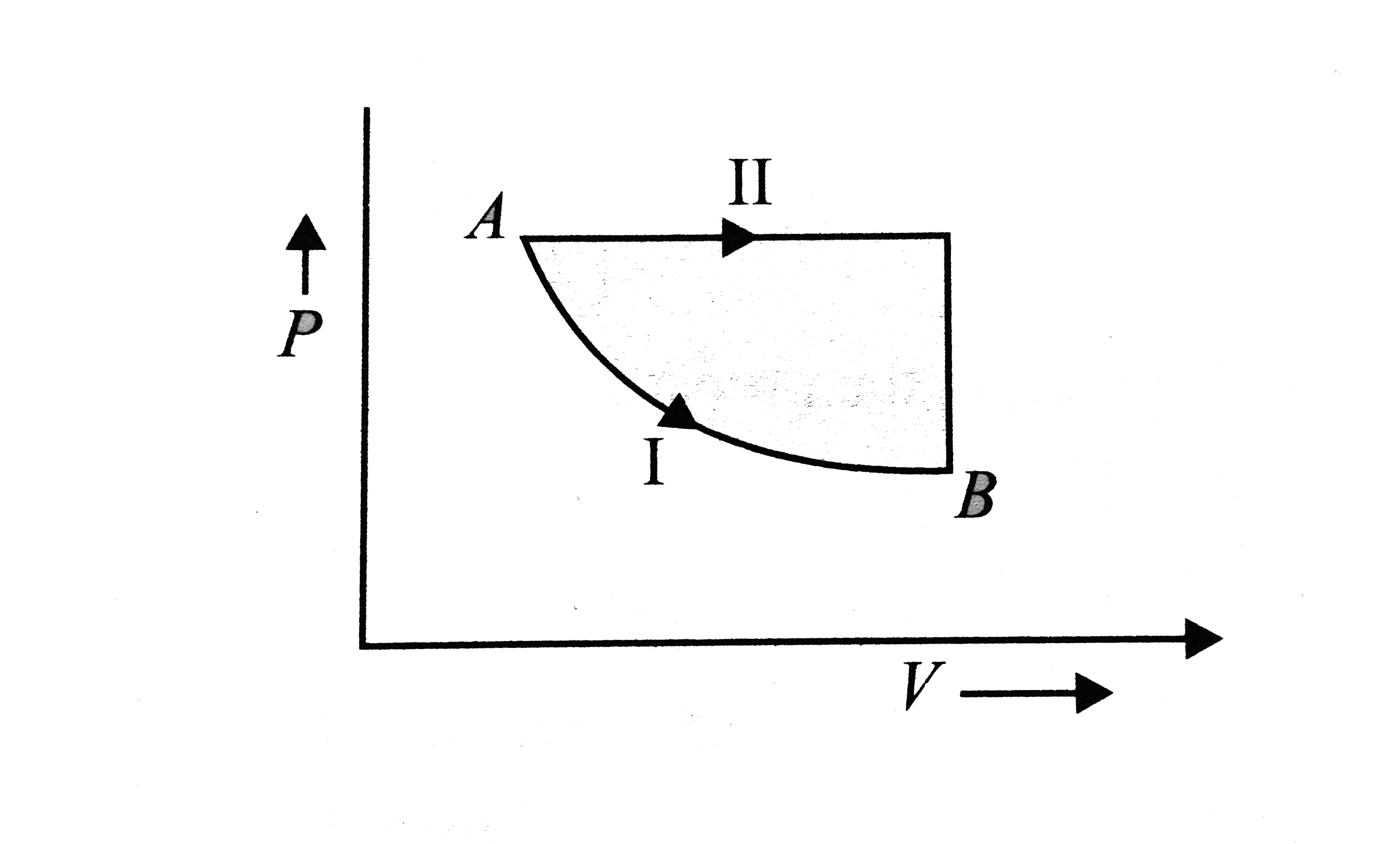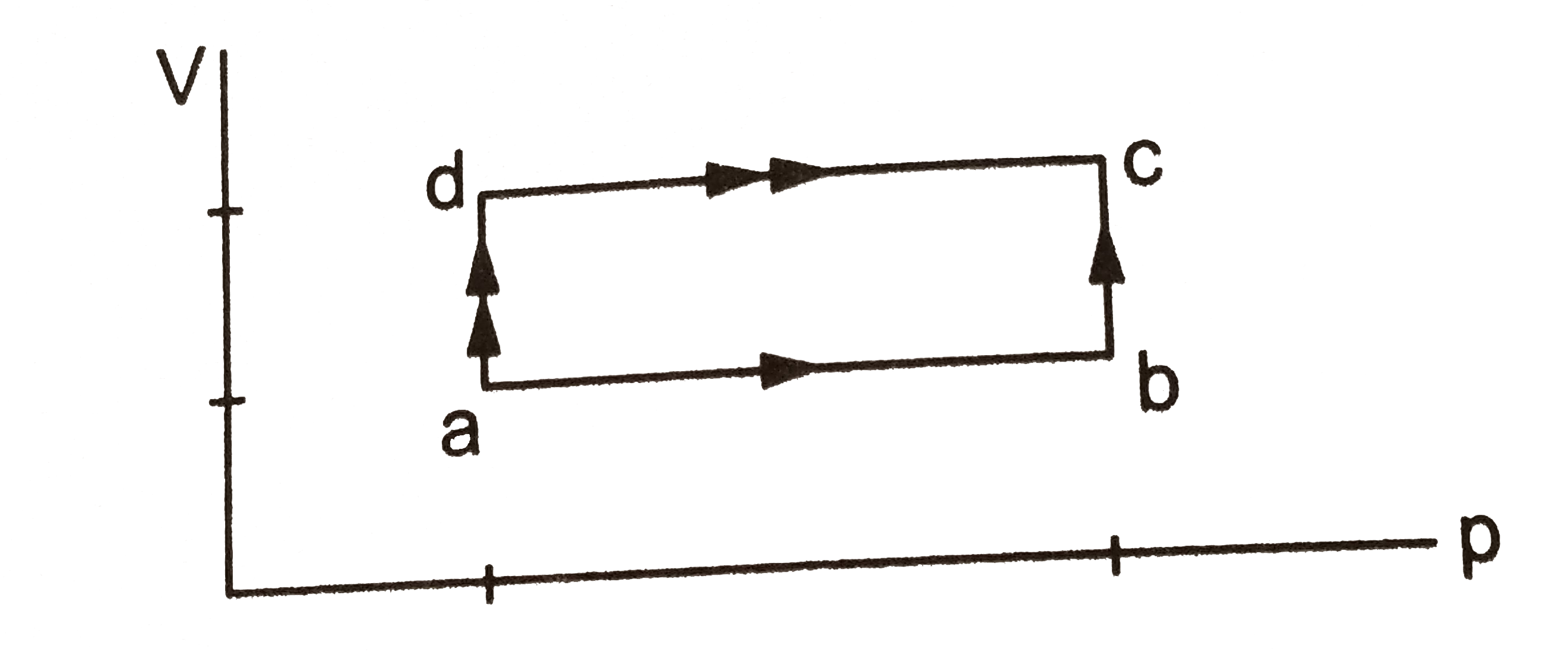A perfect gas goes from state A to another state B by absorbing 8 x 105 J of heat and doing 6.5 x 105 J of external work. It is now transferred between the same two states in another process in which it absorbs 105 J of heat. Then in the second process,
(a)Work done on gas is 105J
(b)Work done on gas is 0.5×105J
(c)Work done by gas is 105J
(d)Work done by gas is 0.5×105J
The correct Answer is:B
To solve the problem step by step, we will use the first law of thermodynamics, which states that the change in internal energy (ΔU) of a system is equal to the heat added to the system (ΔQ) minus the work done by the system (ΔW). The equation can be expressed as:
ΔQ=ΔU+ΔW
Step 1: Analyze the first process (from state A to state B)
Given:
- Heat absorbed (ΔQ₁) = 8×105J
- Work done by the gas (ΔW₁) = 6.5×105J
Using the first law of thermodynamics:
ΔU1=ΔQ1−ΔW1
Substituting the values:
ΔU1=(8×105)−(6.5×105)
Calculating ΔU₁:
ΔU1=1.5×105J
Step 2: Analyze the second process (between the same states)
In the second process, we have:
- Heat absorbed (ΔQ₂) = 105J
We will use the same change in internal energy (ΔU) calculated from the first process, which is 1.5×105J.
Using the first law of thermodynamics again for the second process:
ΔQ2=ΔU+ΔW2
Substituting the known values:
105=1.5×105+ΔW2
Step 3: Solve for work done in the second process (ΔW₂)
Rearranging the equation to find ΔW₂:
ΔW2=105−1.5×105
Calculating ΔW₂:
ΔW2=105−1.5×105=−0.5×105J
Conclusion
The negative sign indicates that work is done on the gas during the second process. Therefore, the work done on the gas is:
ΔW2=−0.5×105J
Final Answer
The work done on the gas in the second process is 0.5×105J.
- Heat absorbed (ΔQ₁) = 8×105J
- Work done by the gas (ΔW₁) = 6.5×105J
- Heat absorbed (ΔQ₂) = 105J
Similar Questions
A perfect gas goes from a state A to another state B by absorbing 8 × 105 J of heat and doing 6.5 × 105 J of external work. It is now transferred between the same two states in another process in which it absorbs 105 J of heat. In the second process work done by the gas is ?
View SolutionA certain mass of gas is taken from an initial thermodynamics state A to another state B by process I and II. In process I for the gas does 5J of work and absorbs 4J of heat energy. In process II, the gas absorbs 5J of heat. The work done by the gas in process II is

View Solution
Knowledge Check
When the state of a gas adiabatically changed from an equilibrium state A to another equilibrium state B an amount of work done on the stystem is 35 J. If the gas is taken from state A to B via process in which the net heat absorbed by the system is 12 cal, then the net work done by the system is (1 cal = 4.19 J)
Aa. 13.2JBb. 15.4 JCc. 12.6 JDd. 16.8 JIn changing the state of a gas adiabatically from an equilibrium state A to another equilibrium state B an amount of work equal to 22.3 J is done on the system.If the gas is taken from state A to B via a process in which the net heat absorbed by the system is 9.35 cal then the net work done by the system in latter case is
(Take 1 case =4.2 J)A15 JB16 JC17 JD18 J
A gas undergoes change from state A to state B. In this process, the heat absorbed and work done by the gas is 5 J and 8 J, respectively. Now gas is brought back to A by another process during which 3 J of heat is evolved. In this reverse process of B to A:
View SolutionA gas undergoes a change of state during which 100J of heat is supplied to it and it does 20J of work. The system is brough back to its original state through a process during which 20 J of heat is released by the gas. What is the work done by the gas in the second process?
View SolutionWhen a system goes from state A to state B, it is supplied with 400 J of heat and it does 100 J of work.
(a) For this transition, what is the system's change in internal energy?
(b) If the system moves from B to A, what is the change in internal energy?
(c) If in moving from A to B along a different path in which W′AB=400J of work is done on the system, how much heat does it absorb?
View Solutionwhen a system is taken through the process abc shown in the fig. 80 J of heat is absorbed by the system and 30 J of work is done by it. If the system does 10 J work during the process adc, how much heat flows into it during the process ?

View SolutionIn changing the state of a gas adiabatically from an equilibrium state A to another equilibrium state B, an amount of work equal to 22.3J is done on the system. If the gas is taken from State A to B via a process in which the net heat absorbed by the system is 9.35cal., How much is the net work done by the system in the later case? (Take 1cal.=4.9J)
View SolutionA system undergoes a process which absorbed 0.5KJ of heat and undergoing an expansion againt external pressure of 1atm, during the process change in internal energy is 300J. Then predict the change in volume (lit)
View Solution
